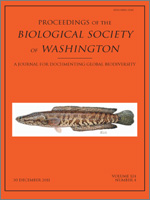Symbiosis is an evolutionary trend in several phylogenetic clades of the taxonomically and functionally diverse Copepoda. However, little attention has been paid to associated and parasitic taxa that infest macroalgae. Harmful effects of phytal harpacticoids that are borers or produce galls, have been reported for several species of wild and farmed macroalgae. Besides being food for human consumption, marine macroalgae provide promising products for the cosmetic and pharmaceutical industries and biomass for the production of biofuel. A study of their consumers and parasites is, therefore, of great significance for fundamental marine ecology, as well as for their mass production in mariculture. We describe here the naupliar and copepodid stages of Amenophia orientalis, with illustrations of naupliar stages II–IV and copepodid stages II–V. Postembryonic characters of the naupliar and copepodid phases of development are discussed in the context of phylogenetic relationships among the Thalestridae. Remarks are provided on the ecology of the species.
How to translate text using browser tools
1 December 2011
Postembryonic development of Amenophia orientalis (Copepoda, Harpacticoida), with a review of thalestridomorph development
Sung Joon Song,
Hans-Uwe Dahms,
Jong Seong Khim
ACCESS THE FULL ARTICLE
It is not available for individual sale.
This article is only available to subscribers.
It is not available for individual sale.
It is not available for individual sale.
copepod development
copepod life history stages
macroalgae
phytal copepods





